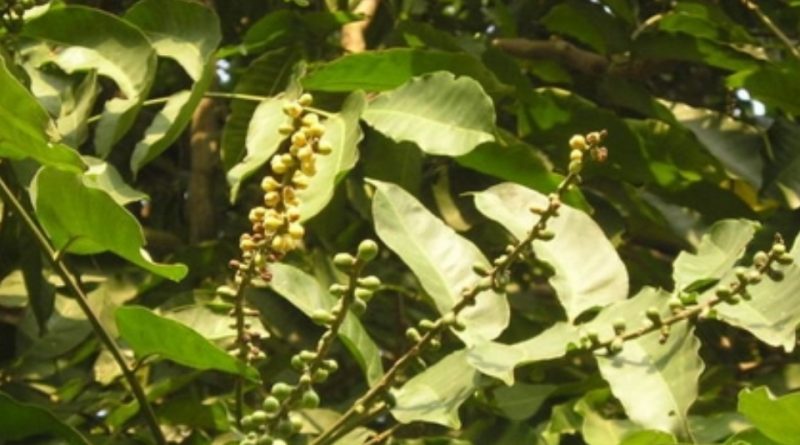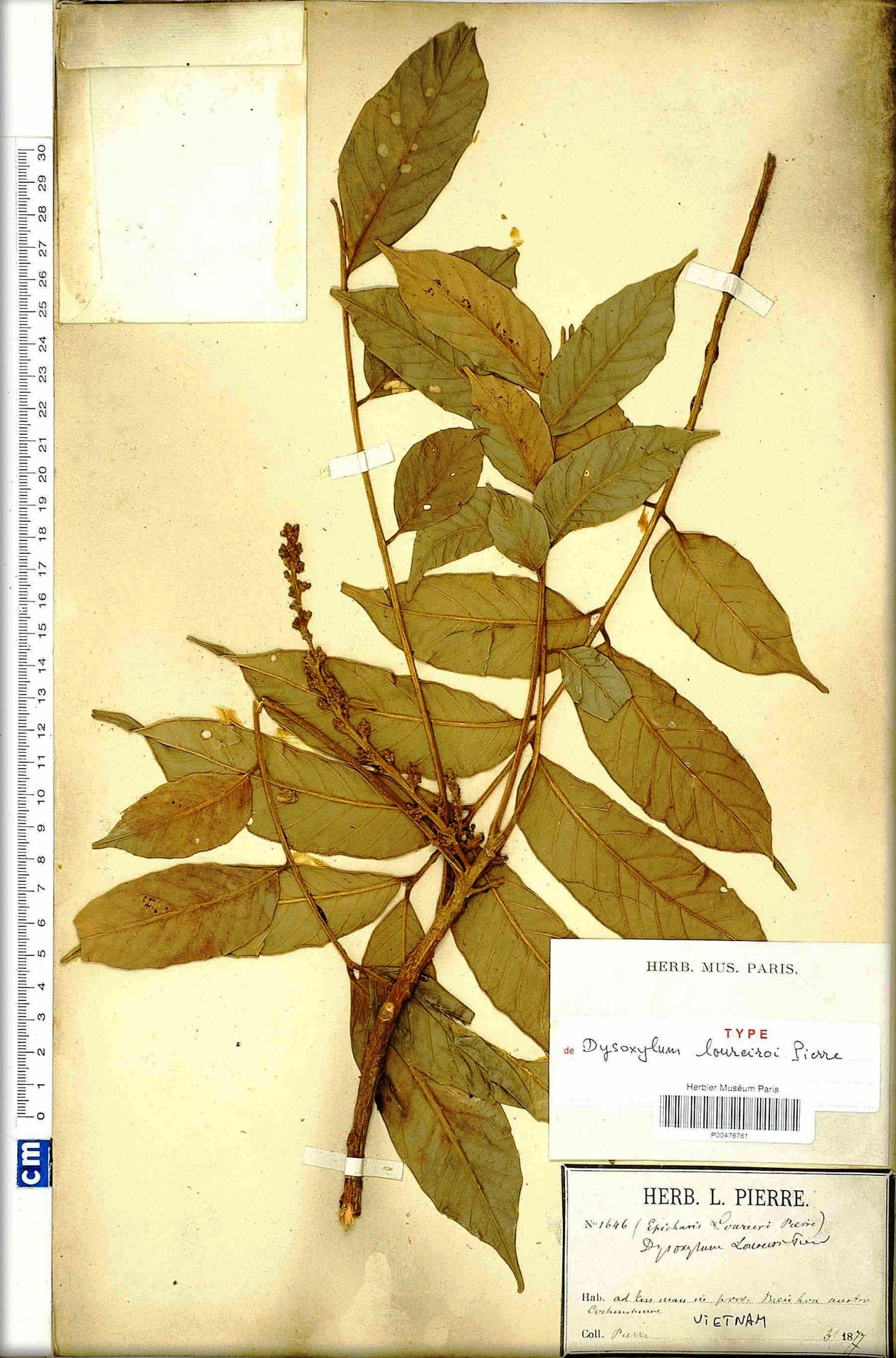Dysoxylum loureiri
Dysoxylum loureiri
Marah-prao (Dysoxylum loureiri Pierre) is an arboreal species belonging to the Meliaceae family.
Systematics –
From a systematic point of view it belongs to:
Eukaryota Domain,
Kingdom Plantae,
Magnoliophyta Division,
Class Magnoliopsida,
Subclass Rosidae,
Order Sapindales,
Family Meliaceae,
Subfamily Melioideae,
Genus Dysoxylum,
Species D. loureiri.
Etymology –
The term Dysoxylum comes from the Greek adversary prefix δυσ- dys- and from ξυλον xylon wood: in reference to the bad smell of the wood of these plants.
The specific epithet loureiri was given in honor of the Portuguese missionary, physician, paleontologist and botanist João de Loureiro (1717-1791) who lived for decades in Cochinchina, China and Goa; author of Flora Cochinchinensis.
Geographic Distribution and Habitat –
Dysoxylum loureiri is a plant distributed in lowland forests, particularly dense along the southwest coast and the adjacent highlands of Cambodia. It is an endemic species of Cambodia and southern Vietnam. In particular, it is found in the areas of Koh Kong, Pursat and Kampong Thom.
Its habitat is that of evergreen forests, primary or secondary, usually on basalt, sandstone and sandy clay soils.
Description –
The Dysoxylum loureiri is a large tree, up to 20-35 m tall, with short and hairy branches.
The wood is pale yellow, aromatic, incorruptuous, but susceptible to splitting at high temperatures.
The leaves are bipinnate, carried by 30-40 cm long petioles, formed by 5-9 leathery leaflets which occur in alternate or opposite pairs, ranging from 12-13 cm in length and 4-4.5 cm in width. The individual leaflets are with an asymmetrical base and a sharp apex. They have 10-14 pairs of ascending curved nerves.
Flowering occurs on about half of the branches.
The flowers, yellowish, globose, densely hairy and about 3-4 cm. The glass is made up of 4 free sepals, while the 4 petals are twice as long as the glass and with a hairy outer surface. They consist of eight stamens united in a short tube. The stylus is umbrella-shaped and the ovary is globular and covered with a dense layer of filaments.
The fruits are capsules with 3-4 chambers, each containing 2 seeds.
Cultivation –
This plant is used in its natural habitats for wood or for collecting seeds.
Seeds are usually collected from the tree or ground after shaking
the branches. In areas of seed origin, the soil is usually cleared and sometimes burned to facilitate seed collection. In addition, to facilitate the harvest, covers can be arranged on the ground.
The optimal moment of harvest is when the fruits change color from green to brownish. The maturity of these can be verified by a shear test.
Customs and Traditions –
Dysoxylum loureiri is exploited in nature both for its timber that is used in construction, in the construction of coffins and for agricultural, sports, furniture, etc. tools.
This plant extracts an oil used in traditional medicine as a diuretic and cardiotonic; it is also burned in Buddhist temples.
Because marah-prao wood has a high value and is in great demand, this species is exploited beyond its ability to reproduce and is in danger of extinction if adequate protection measures are not taken.
The distribution of this species is now fragmented and its habitats have been destroyed by forest land conversions and selective illegal logging. The number of mature trees are now few, and this translates into difficulties in obtaining collections of seeds.
In 2002 the second CTSP meeting on the Strategy for the conservation of Dysoxylum loureiri and its habitats was defined.
This species is protected by the Cambodian forest under Law No. 35.
Preparation Mode –
Dysoxylum loureiri belongs to the group of species which, due to habitat destruction, deforestation and excessive exploitation, should not be used for any use and protected by particular safeguard policies.
Guido Bissanti
Sources
– Acta Plantarum – Flora of the Italian Regions.
– Wikipedia, the free encyclopedia.
– Useful Tropical Plants Database.
– Conti F., Abbate G., Alessandrini A., Blasi C. (ed.), 2005. An annotated checklist of the Italian vascular flora, Palombi Editore.
– Pignatti S., 1982. Flora d’Italia, Edagricole, Bologna.
– Treben M., 2000. La Salute dal Farmacia del Lad, Advice and experiences with medicinal herbs, Ennsthaler Editore.
Warning: Pharmaceutical applications and alimurgical uses are indicated for informational purposes only, they do not represent in any way a medical prescription; therefore no responsibility is taken for their use for curative, aesthetic or food purposes.


